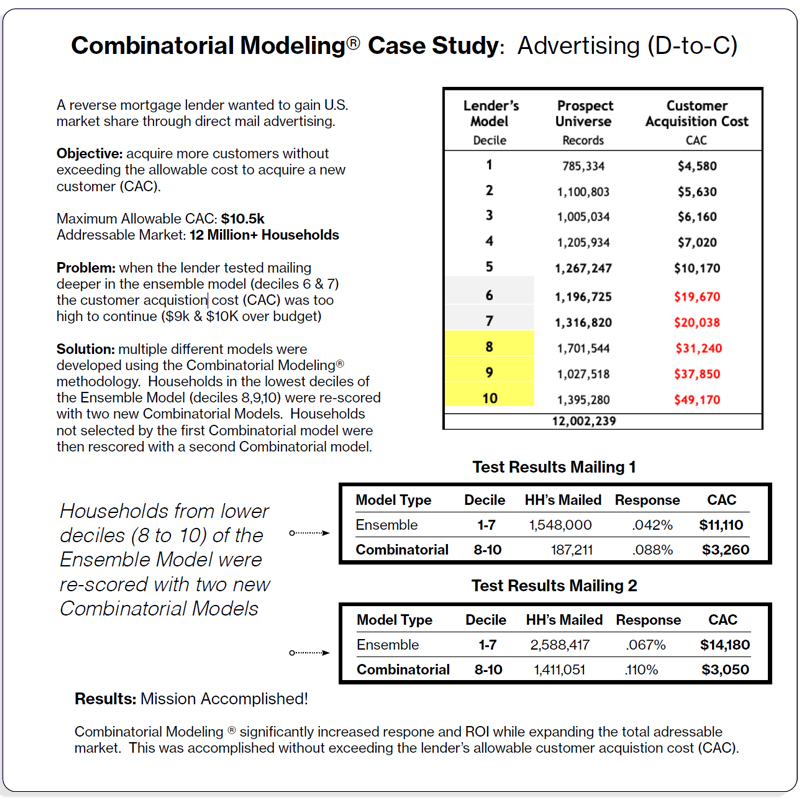Combinatorial Modeling Methodolgy®
More Raw Data Points +
More Useful Features =
More Predictive Models
All predictive models have a few things in common:
- They use information (data points) from past events to make predictions
about future events. - They analyze and transform data to identify useful features to tell apart good
outcomes from bad ones.
Your biggest problem: most organizations rely mainly on data science teams (technical experts) to manage the entire feature-engineering process; ignoring the importance and added-value of including other areas of category experts who may have greater domain knowledge.
This problem is exacerbated by the simple fact that the majority of business people typically know just enough about data science to be dangerous. One example of this is the over use and popularity of Ensemble Models -- which is basically a blend of multiple models, but ultimately a single solution. This totally contradicts the principle of the “no free lunch” theorm.
The no free lunch (NFL) theorem basically states that no single algorithm (or model for that matter) is going to be the best solution for all problems.
When you consider how this fundamental data science principle applies to the process of model development, you will realize the value of using multiple models in a combinatorial way rather than blending them all together as a single solution
It is equally important to ensure that all the models in your combinatorial array utilize distinct feature-variables (which are not highly correlated) in order to avoid the collinearity problem that arises from feature-variable redundancy. This is accomplished by simply starting with a bigger universe of data points so that you end up with more useful features.
Some common demographic data points that are often redundant:
Consumer Age > Education Level > Physical Address (zip code)
These are all basically proxies for a person’s income/affluence.
Use Cases:
These are just a few examples of useful business applications:

